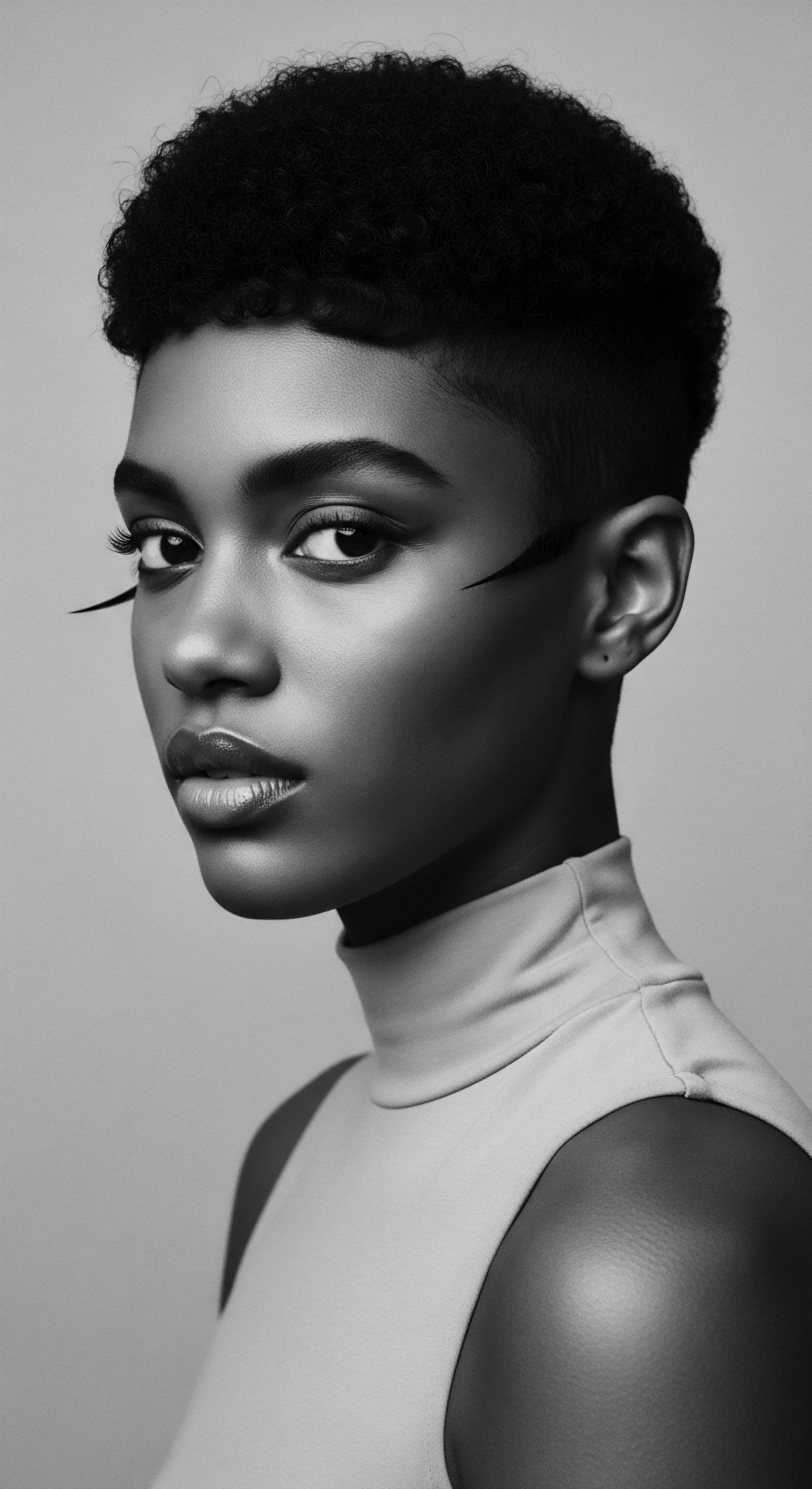
Roots
To hold a strand of textured hair in one’s hand is to hold a segment of time, a delicate helix spun with stories reaching back to the dawn of human experience. It coils and dances with an ancestral memory, a silent testament to survival, resilience, and beauty born of ingenuity. For generations, stretching across continents and countless sunrises, hair oiling has been a deeply ingrained practice for those with textured hair, a dialogue between humankind and the earth’s abundant offerings. It was not merely about superficial adornment; it was about thriving, about protection, about maintaining a connection to something ancient and essential in a world often challenging.
From the sun-drenched landscapes of ancient Africa to the vastness of diasporic journeys, the very structure of textured hair—its tight coils, its inherent porosity—presented particular needs. Sebum, the natural oil produced by the scalp, travels a circuitous path down a coily strand, making it prone to dryness. This inherent tendency towards dryness made external lubrication a biological imperative for health and manageability.
Early humans, attuned to their environments, discovered that pressing oil from seeds, nuts, and fruits offered a profound solution, a form of elemental biology in action. This deep biological need shaped a practice that would become entwined with cultural identity.
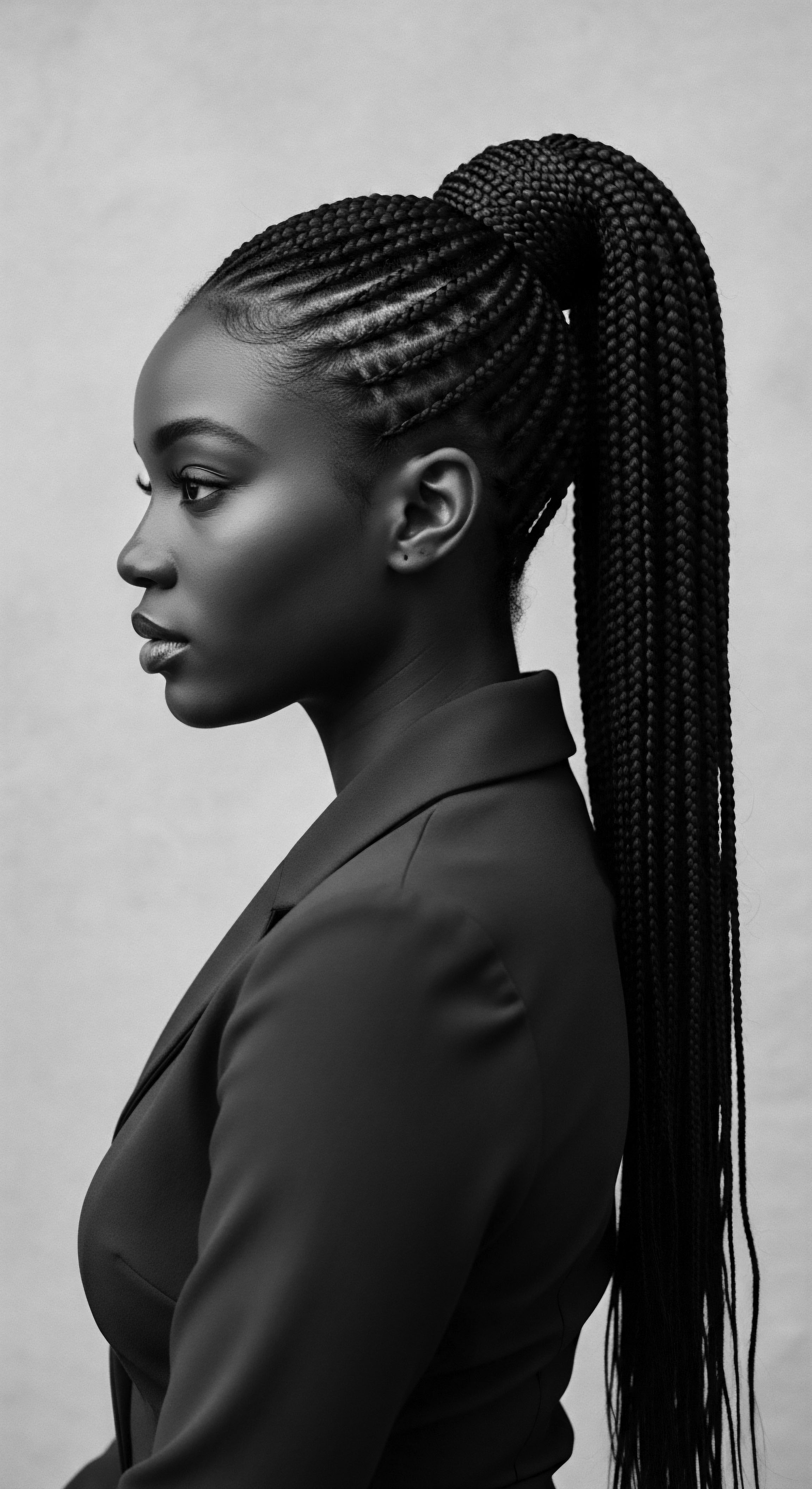
Hair Anatomy and the Echo of Ancestry
The unique architecture of textured hair, often characterized by its elliptical cross-section and numerous twists, directly impacts its hydration needs. These structural properties mean that natural oils produced at the scalp struggle to traverse the full length of the hair shaft. Without intervention, hair becomes susceptible to dehydration, brittleness, and breakage. Our ancestors, perhaps without scientific nomenclature, understood this intrinsic need.
They observed, experimented, and recognized the power of external lipids. This recognition became a foundational knowledge, passed from elder to child, mother to daughter, fostering a lineage of care that responded directly to the hair’s biological blueprint. The practice of oiling served as an indispensable link in this chain of understanding, bridging the elemental biology of hair with sustained, healthy growth.
Hair oiling, for textured strands, began as a necessary adaptation to environmental realities, evolving into a fundamental act of care.
The earliest forms of hair classification, perhaps unwritten but keenly observed, revolved around functionality and environmental response. Certain oils, whether shea butter in West Africa or castor oil in ancient Egypt, were favored for their ability to seal moisture within the hair shaft, shielding it from harsh sun and dry winds. The understanding of which plant yielded the most protective oil, or which combination offered the greatest luster, became a form of inherited botanical wisdom, inseparable from the understanding of the hair itself. This tradition meant learning the botanical names not from books, but from the land, the elders, and the feel of the raw ingredients in one’s hands.
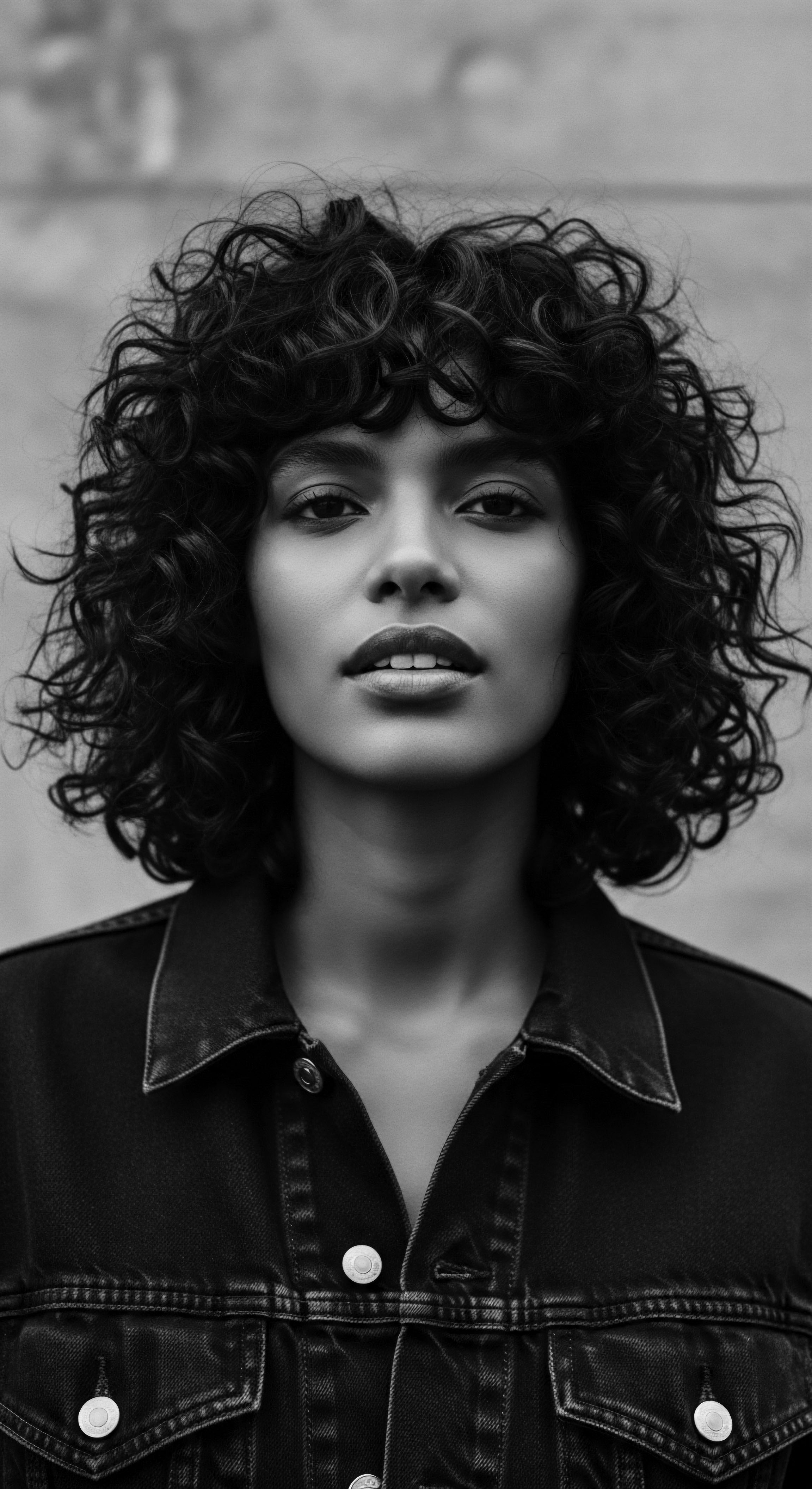
The Foundational Lexicon of Traditional Care
Across diverse African societies, specific terms designated hair practices and the ingredients that sustained them. These were not just words; they were vessels of cultural knowledge, preserving the wisdom of generations. The very concept of “hair oiling” encompasses a spectrum of techniques and purposes. In some communities, it was a daily application to soften and detangle; in others, a preparatory ritual for intricate styling.
- Shea Butter ❉ A rich, creamy butter extracted from the nuts of the shea tree, vital for moisture and protection in West African hair traditions.
- Castor Oil ❉ A viscous oil from the castor bean, historically prized in ancient Egypt for its thickening and fortifying properties.
- Moringa Oil ❉ Known in ancient Egypt for its lightweight texture and ability to nourish the scalp.
The growth cycle of textured hair, characterized by its longer anagen (growth) phase compared to some other hair types, also meant that practices supporting length retention were vital. Oiling, by minimizing breakage and creating a less abrasive environment, directly supported the hair’s ability to maintain its length. This practical aspect was deeply tied to cultural ideals of healthy, robust hair.
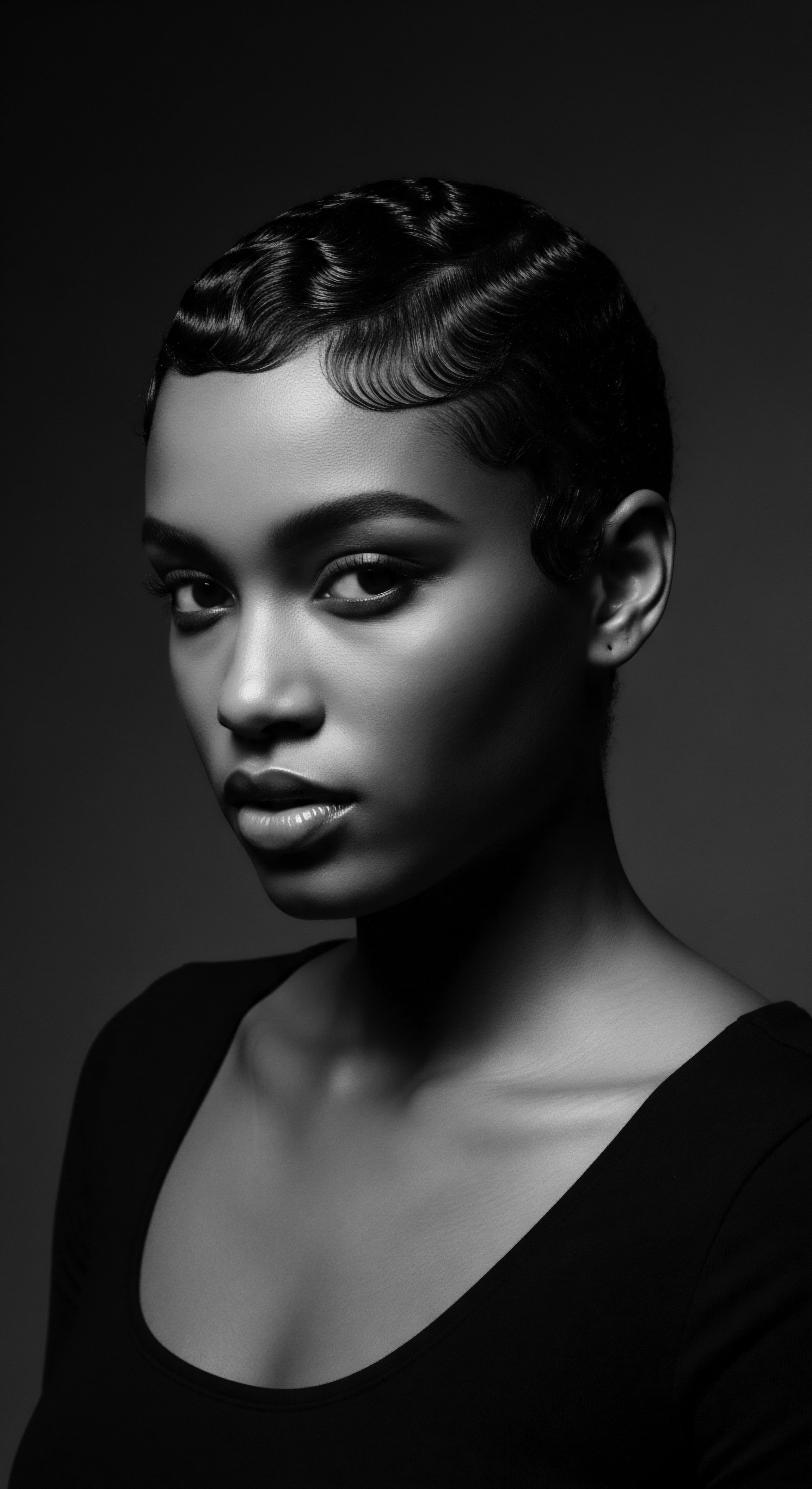
Ritual
The act of oiling textured hair ascended beyond mere physical necessity, evolving into a profound ritual—a tender thread connecting individuals to community, to history, and to self. These rituals were not isolated moments but were interwoven into the very fabric of daily life, serving social, aesthetic, and even spiritual purposes. They were moments of transmission, where the touch of hands shared not only oil but stories, techniques, and the deeper meanings embedded in each application. The consistency of these practices cemented hair oiling as a cornerstone of textured hair heritage.
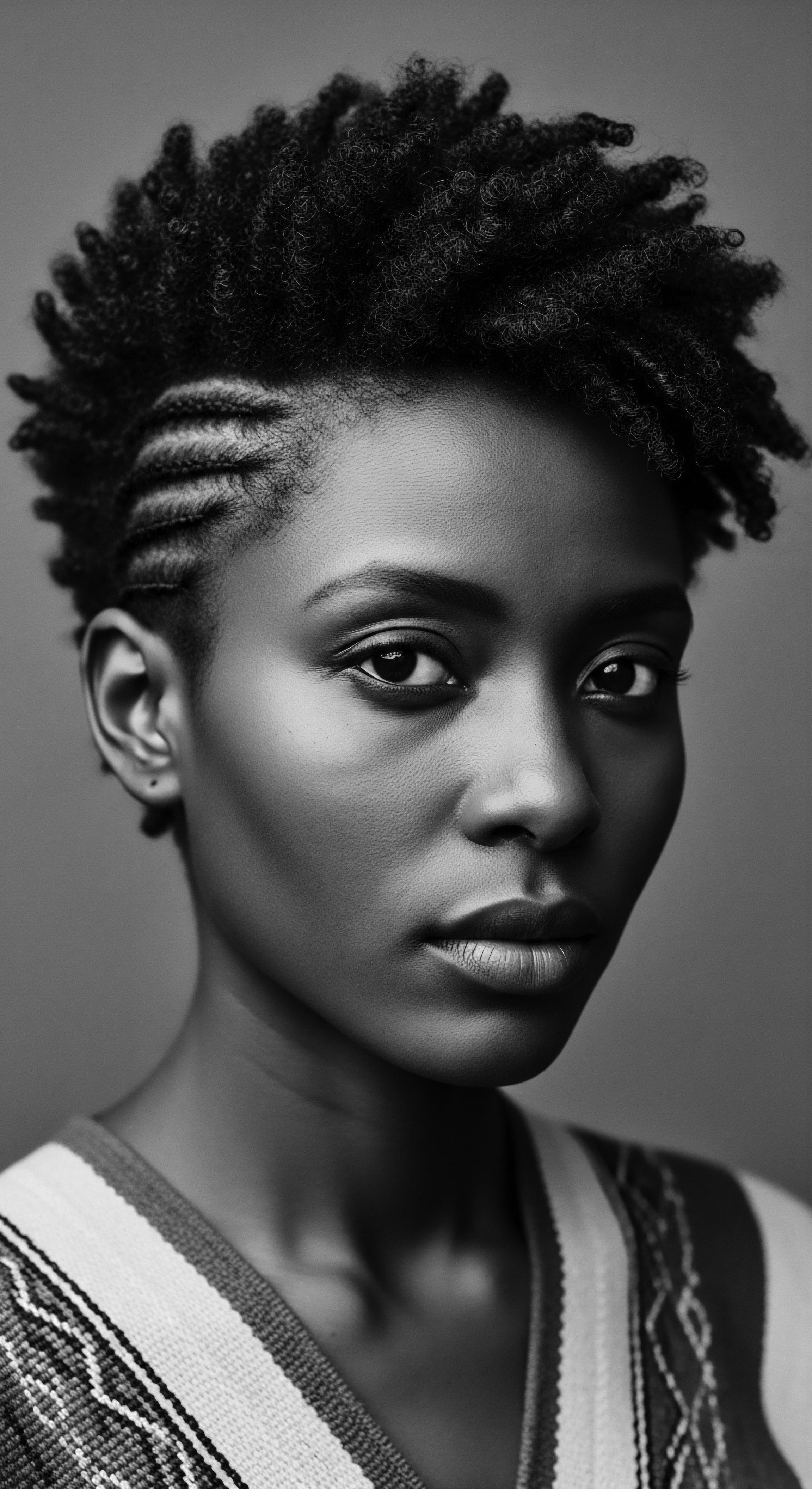
Styling with Ancestral Hands
The rich and diverse world of textured hair styling owes a substantial debt to the historical application of oils. Protective styles, which have been a hallmark of African and diasporic hair traditions for centuries, relied on oils to facilitate creation and extend wear. Consider the complex cornrows of West Africa, which could indicate social status, age, or even tribal affiliation.
The intricate precision of these styles was often aided by the softening, lubricating qualities of oils and butters, allowing for cleaner parts, smoother strands, and less tension during the braiding or twisting process. Oils acted as a foundational element, preparing the hair for artistry and preserving its vitality once styled.
Hair oiling was a pre-styling ritual, softening coils and preserving the delicate integrity of strands during intricate styling.
The creation of styles like Bantu knots, twists, and various forms of braiding, often requiring hours of communal effort, would have been considerably more challenging, and indeed damaging, without the protective layer and pliability that oils provided. These oils created a slip that minimized friction during manipulation, a common cause of breakage for textured hair. This practical aspect of damage prevention speaks to a deep, inherited wisdom about hair maintenance.

Traditional Tools and Their Oiled Companions
The tools of ancestral hair care were often simple yet highly effective, and oils were their constant companions. Combs carved from wood or bone, used to part and detangle, worked more smoothly through hair that had been generously oiled, preventing unnecessary pulling and breakage. The very hands that crafted these tools were often anointed with the same oils, ensuring a respectful interaction with the hair.
| Historical Purpose Provided slip for detangling and styling intricate braids and twists. |
| Contemporary Connection to Heritage Reduces friction and breakage during modern detangling and protective styling, connecting to ancestral methods. |
| Historical Purpose Sealed moisture to prevent dryness in harsh climates. |
| Contemporary Connection to Heritage Retains hydration in hair susceptible to environmental stressors, preserving health. |
| Historical Purpose Nourished the scalp and promoted healthy hair growth. |
| Contemporary Connection to Heritage Supports scalp microbiome and follicle health, aligning with holistic wellness. |
| Historical Purpose Contributed to hair's luster and aesthetic presentation. |
| Contemporary Connection to Heritage Enhances natural shine and appearance, honoring traditional beauty standards. |
| Historical Purpose The enduring value of hair oiling for textured hair lies in its consistent ability to meet ancient needs through practices that echo into the present. |
Consider the “wash day” ritual, a deeply personal and familial experience for many with Black textured hair that persists to this day. This dedicated time often involved, and continues to involve, the liberal application of oils to hair before and after cleansing, to aid in detangling and to reintroduce moisture. Walker (2021) recounts the weekly wash day as a significant family ritual, connecting individuals to their heritage, where oils were a primary component of care. This historical continuity highlights how the physical act of oiling transcends time, becoming a marker of cultural identity and familial bonding.
Even heat styling, in its earliest forms, would have implicitly involved oils. While modern heat protectants are a more recent invention, historical methods of straightening, such as hot combs, would have benefited from oils to create a smoother finish and to mitigate damage, however rudimentary the understanding of heat protection may have been. The application of fats and oils to hair before using heated tools was a practical means of achieving a desired aesthetic while attempting to safeguard the hair’s integrity.
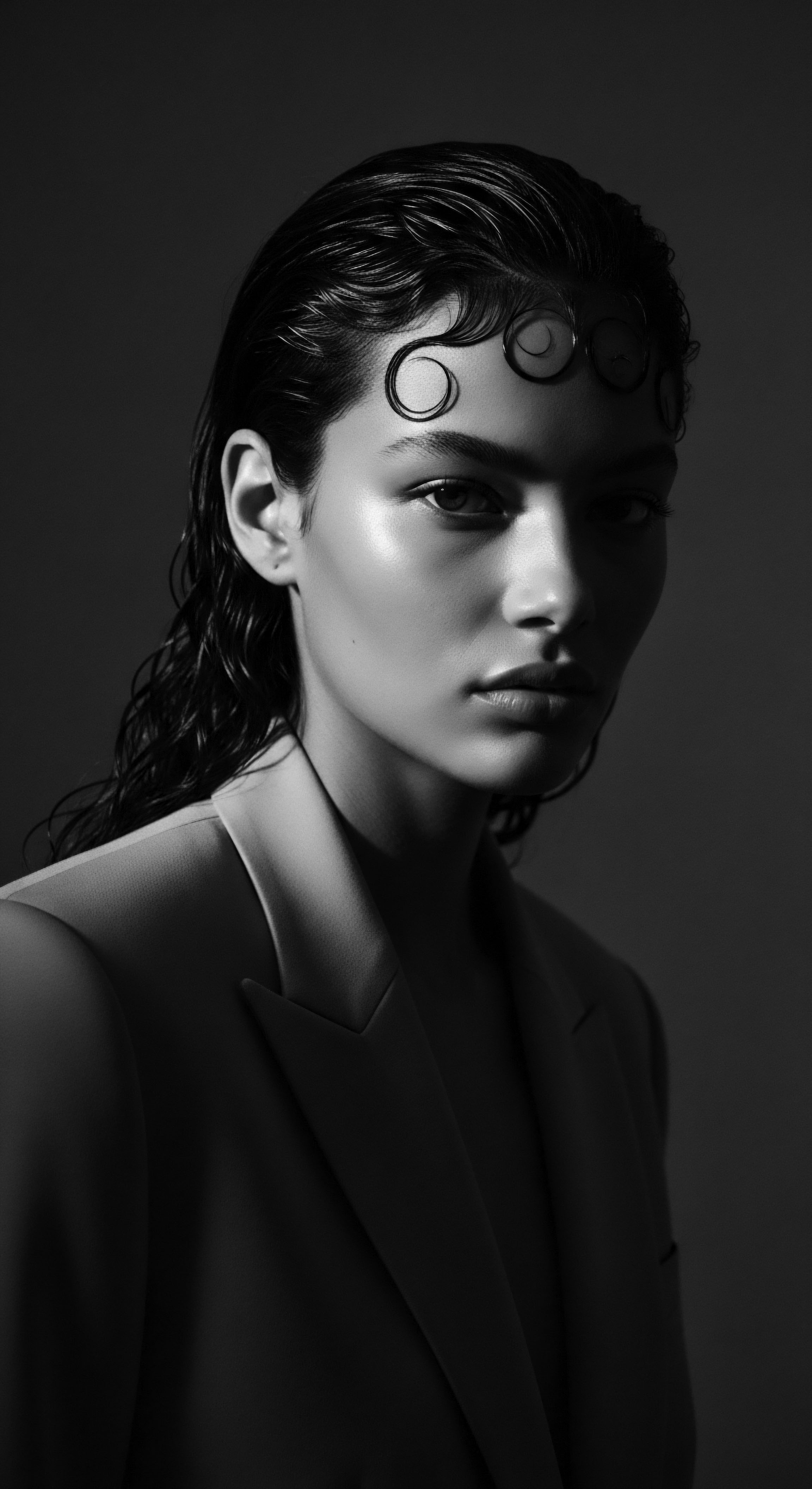
Relay
The legacy of hair oiling for textured hair extends far beyond its immediate physical benefits. It represents a continuous relay of knowledge, a testament to resilience, and a powerful voice for identity and self-determination across generations. The historical purposes of oiling are inseparable from the broader narrative of textured hair heritage, which has, at various junctures, been a symbol of both cultural pride and systemic oppression. Understanding this practice requires appreciating its journey from ancient wisdom to a contemporary reclamation, validated by both lived experience and modern science.
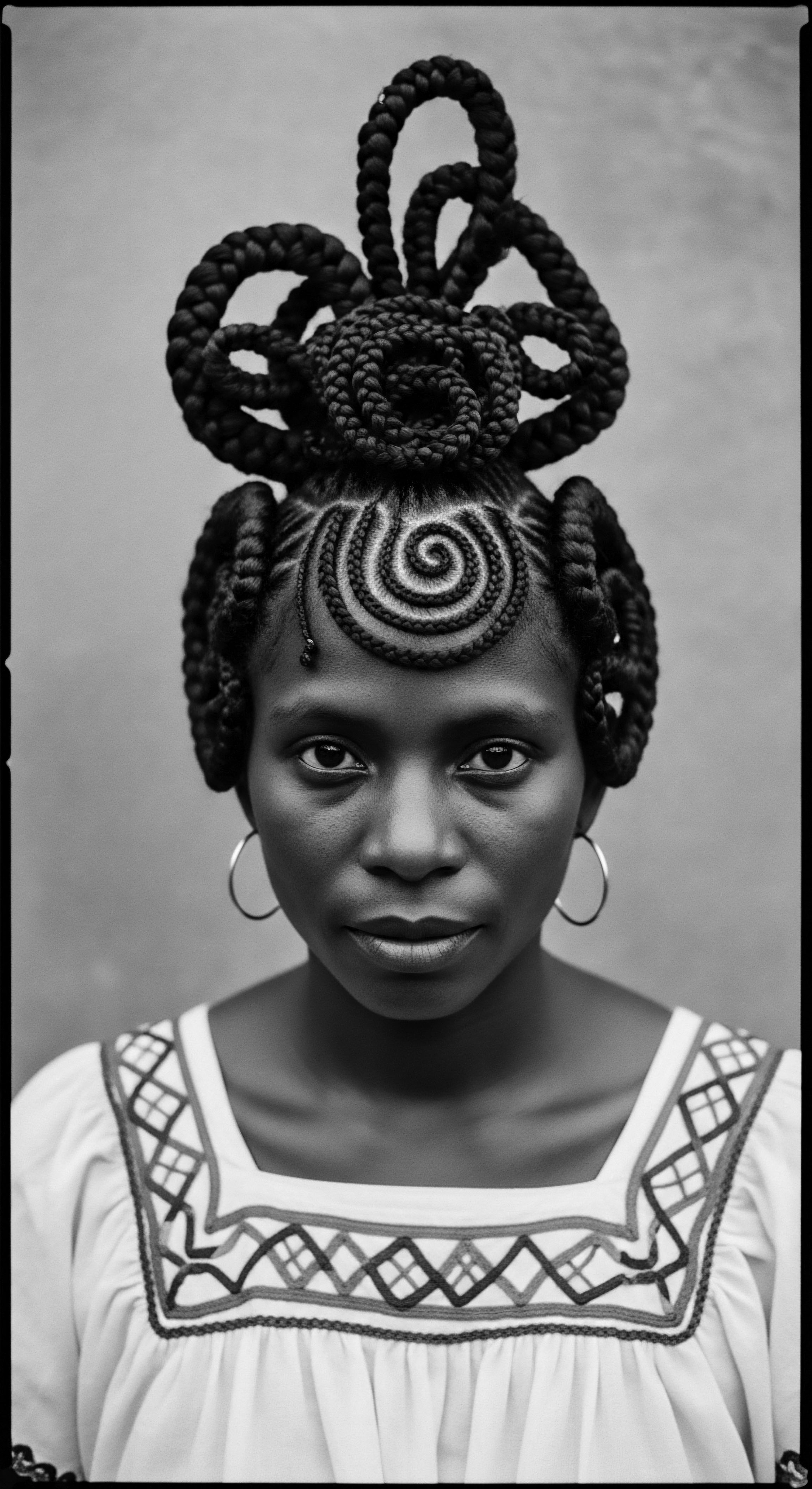
Holistic Care from the Ancestral Wellspring
The application of oils was central to a holistic approach to wellbeing, where hair health was viewed as interconnected with the health of the entire person. Traditional African and diasporic wellness philosophies often integrated physical care with spiritual and communal aspects. Oiling the hair and scalp was not just about conditioning strands; it was believed to stimulate circulation, soothe the nervous system, and even protect the spiritual crown.
This approach aligns with the Ayurvedic concept of ‘sneha’ in India, where the word for ‘to oil’ also means ‘to love’. This sentiment resonates profoundly within textured hair communities, where the act of oiling is frequently a tender, familial exchange, a non-verbal affirmation of care and connection passed from one generation to the next.
Scientific understanding has begun to explain the wisdom of these ancestral practices. For example, coconut oil, a staple in many traditional hair care practices, has been shown to reduce protein loss from hair, strengthening strands and preventing damage. Argan oil, traditionally used in North Africa, is rich in antioxidants and fatty acids, improving elasticity and shine. The efficacy observed through centuries of practice finds validation in contemporary research, bridging ancient knowledge with modern discovery.
For individuals with textured hair, prone to dryness due to the unique coiling of the hair shaft, oils formed a crucial barrier against moisture loss. Wilson (2022) notes that a primary benefit of hair oiling for afro-textured hair is to help retain moisture, which is particularly important given its propensity for dryness and breakage. This protective layer also shielded hair from environmental aggressors, including the sun and wind, a vital function in many ancestral climates.
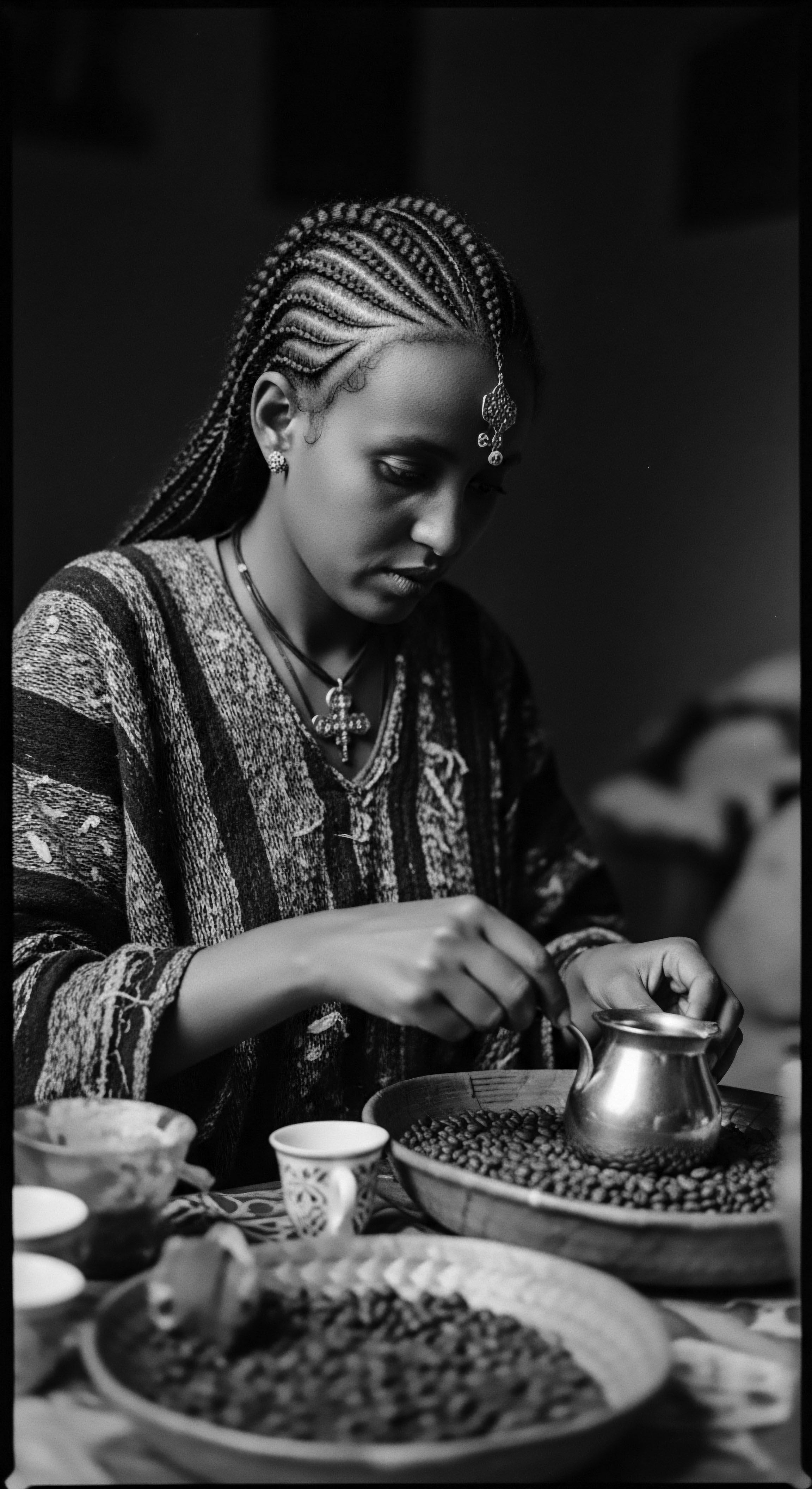
Problem Solving through Inherited Wisdom
Historically, oils were the primary solutions for a range of hair and scalp concerns within textured hair communities. They addressed issues like:
- Dryness and Brittleness ❉ The most common concern for textured hair, oils provided essential lubrication and moisture sealing.
- Scalp Health ❉ Massaging oils into the scalp helped address flaking, irritation, and supported overall scalp vitality.
- Breakage ❉ By improving elasticity and reducing friction during styling, oils significantly lowered the risk of mechanical damage.
During the transatlantic slave trade, enslaved Africans were forcibly stripped of their traditional hair care tools and ingredients. This loss, as detailed by Tharps (2020), led to severe challenges, with individuals resorting to using cooking oil, animal fats, and butter to care for their hair. Despite these brutal disruptions, the practice of oiling, however adapted, persisted as a means of survival for hair health and as a quiet act of preserving cultural identity.
The endurance of this practice through such trials speaks volumes about its inherent value and the deep-seated cultural memory associated with it. The historical record indicates a widespread reliance on materials at hand, even if they were far from ideal, simply to maintain a semblance of hair health and dignity.
As communities moved through the diaspora, oils continued to serve as a link to traditional practices. In colder climates, for instance, African immigrants often adapted their hair care routines to include more protection against harsh weather, with oils playing a major role in moisture retention. This adaptability underscores the enduring utility of oils in varied environments, always centered on the particular needs of textured hair.

Reflection
To consider the historical purposes of hair oiling for textured hair is to trace a resilient and enduring lineage. It is a dialogue with the past, a profound echo from the source, reminding us that care for our strands has always been more than cosmetic. It has been a whisper of love, a shield against adversity, a marker of identity, and a profound connection to generations who walked before us. The oils, extracted from the very earth, have served as silent witnesses to human ingenuity and the unyielding spirit of those who nurtured their hair as a sacred part of self.
The essence of Roothea’s “Soul of a Strand” is truly manifest in this enduring practice. Each drop of oil applied, each gentle massage, carries the accumulated wisdom of ancestors who understood the unique biology of textured hair and responded with resourceful care. It speaks to a time when beauty was inseparable from wellness, and self-care was often a communal act, binding families and communities in shared rituals.
As we stand today, armed with both ancestral knowledge and contemporary scientific understanding, the purposes of hair oiling remain as relevant as ever ❉ to protect, to nourish, to adorn, and, most powerfully, to honor the profound heritage coiled within every textured strand. The story of hair oiling is a living archive, continuously written with each tender application, affirming the timeless connection between our hair, our past, and our collective spirit.

References
- Tharps, L. & Byrd, A. (2020). Hair Story ❉ Untangling the Roots of Black Hair in America. St. Martin’s Press.
- Ajmera, A. R. (2022). The Way of the Goddess ❉ Daily Rituals to Awaken Your Inner Warrior and Discover Your True Self. Simon & Schuster.
- Ollennu, A. (2023). Here’s why hair oiling is the ancient ritual worth adopting. Etre Vous.
- Wilson, I. (2022). “Everything You Need To Know About The Ancient Art Of Hair Oiling.” Newsweek .
- Ouédraogo, A. Lykke, A. M. Lankoandé, B. & Korbéogo, G. (2013). “Potentials for Promoting Oil Products Identified from Traditional Knowledge of Native Trees in Burkina Faso.” Ethnobotany Research and Applications, 11, 071–083.
- Walker, Z. (2021). Know Your Hairitage ❉ Zara’s Wash Day. Self-published.
- Boston University. (2021). “Detangling the History of Black Hair.” Bostonia .
- Alhousseini, A. & Sanda, K. (2024). “Cosmetopoeia of African Plants in Hair Treatment and Care ❉ Topical Nutrition and the Antidiabetic Connection?” MDPI .
- Bokhari, A. (2023). “The Bonding Ritual of Hair Oiling.” Brown History .
- Cécred. (2025). “Understanding Hair Oiling ❉ History, Benefits & More.” Cécred Space .
- Richardson, E. (2024). “Protective Styling For Afro-Textured Hair.” Fulham Scalp And Hair Clinic .
